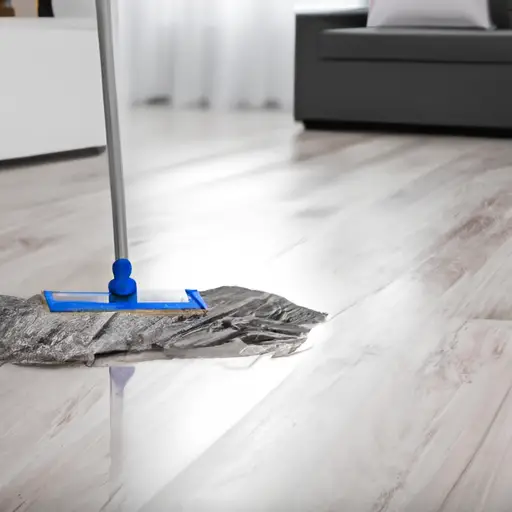How To Clean Natural Bamboo Flooring? (Explained)
Natural bamboo flooring exudes a unique charm and elegance, making it a popular choice among homeowners seeking a sustainable and aesthetically pleasing flooring option.
Gather Necessary Supplies
Before diving into the cleaning process, it’s essential to assemble the right tools and products. Here’s what you’ll need:
1. Broom or vacuum cleaner with a soft brush attachment
2. Microfiber mop or soft cloth
3. pH-neutral bamboo floor cleaner
4. Warm water
5. Soft-bristle brush or mop with a microfiber pad
6. Dry mop or soft cloth for drying
Pre-Cleaning Preparations
1. Remove loose dirt and debris: Start by using a broom or vacuum cleaner with a soft brush attachment to eliminate any loose dirt and debris from the surface of the bamboo flooring.
2. Place doormats at entrances: Strategically placing doormats at entrances will help prevent dirt and grit from being tracked onto the floor, reducing the frequency of cleanings.
3. Promptly address spills: To prevent stains and potential damage, promptly wipe up spills as they occur. Use a clean, damp cloth to blot the area and ensure it’s thoroughly dried.
Cleaning Natural Bamboo Flooring
1. Create a cleaning solution: Prepare a cleaning solution by mixing warm water with a pH-neutral bamboo floor cleaner. Follow the manufacturer’s instructions for proper dilution ratios.
2. Dampen the mop or cloth: Dip the microfiber mop or soft cloth into the cleaning solution, ensuring it’s adequately damp but not oversaturated.
3. Wring out excess water: Before applying the mop or cloth to the flooring, wring out any excess water to avoid over-wetting the surface.
4. Clean in small sections: Begin cleaning from one corner of the room, working towards an exit point. Apply gentle pressure while mopping to effectively lift dirt and grime.
5. Pay special attention to high-traffic areas: Areas that receive heavy foot traffic may require a bit more attention. Spend extra time and effort to ensure they are thoroughly cleaned.
6. Use a soft-bristle brush or microfiber mop for stubborn stains: For tougher stains or spots, dip a soft-bristle brush or a microfiber mop into the cleaning solution and gently scrub the affected area.
7. Rinse the mop or cloth frequently: Rinse the mop or cloth in clean water regularly to prevent spreading dirt and contaminants.
8. Change the cleaning solution if it becomes too dirty: If the cleaning solution becomes visibly dirty, replace it with a fresh batch to ensure effective cleaning.
Drying and Final Steps
1. Use a dry mop or soft cloth for drying: After cleaning, use a dry mop or a clean, soft cloth to thoroughly dry the floor. Ensure no water is left standing on the surface.
2. Inspect for missed spots or stains: Take a moment to inspect the flooring for any areas that may have been overlooked. Address them promptly to maintain a consistently clean appearance.
3. Buff the floor for a polished finish: For an added touch of elegance, gently buff the bamboo flooring with a clean, dry cloth to achieve a polished finish.
Periodic Maintenance
Regular maintenance is key to preserving the beauty and durability of your natural bamboo flooring. Here are some essential tips:
1. Schedule regular cleanings: Establish a cleaning schedule to prevent dirt buildup and maintain the flooring’s luster.
2. Avoid harsh chemicals or abrasive cleaners: Opt for pH-neutral bamboo floor cleaners and avoid using harsh chemicals or abrasive tools, as they can damage the surface.
3. Consider using bamboo floor polish or rejuvenator: Depending on wear and tear, periodically applying a bamboo floor polish or rejuvenator can revitalize the surface and enhance its natural beauty.
4. Address spills and stains promptly: Act swiftly when spills occur to prevent long-term damage or staining.
Troubleshooting Common Issues
1. Dealing with scratches or scuffs: Gently rub a fine-grade steel wool pad over the affected area, following the grain of the bamboo. Apply a small amount of floor polish to restore shine.
2. Removing stains or discoloration: Create a paste with baking soda and water, and gently rub it over the stain. Rinse thoroughly and dry.
3. Repairing water damage or warping: In cases of severe water damage, it may be necessary to replace the affected planks. Consult a professional for guidance on repairs.
Conclusion
With proper care and maintenance, natural bamboo flooring can grace your home with its timeless appeal for years to come. By following the steps outlined in this guide, you’ll not only keep your flooring looking its best but also contribute to its longevity, ensuring that it remains a beautiful focal point in your living space.

